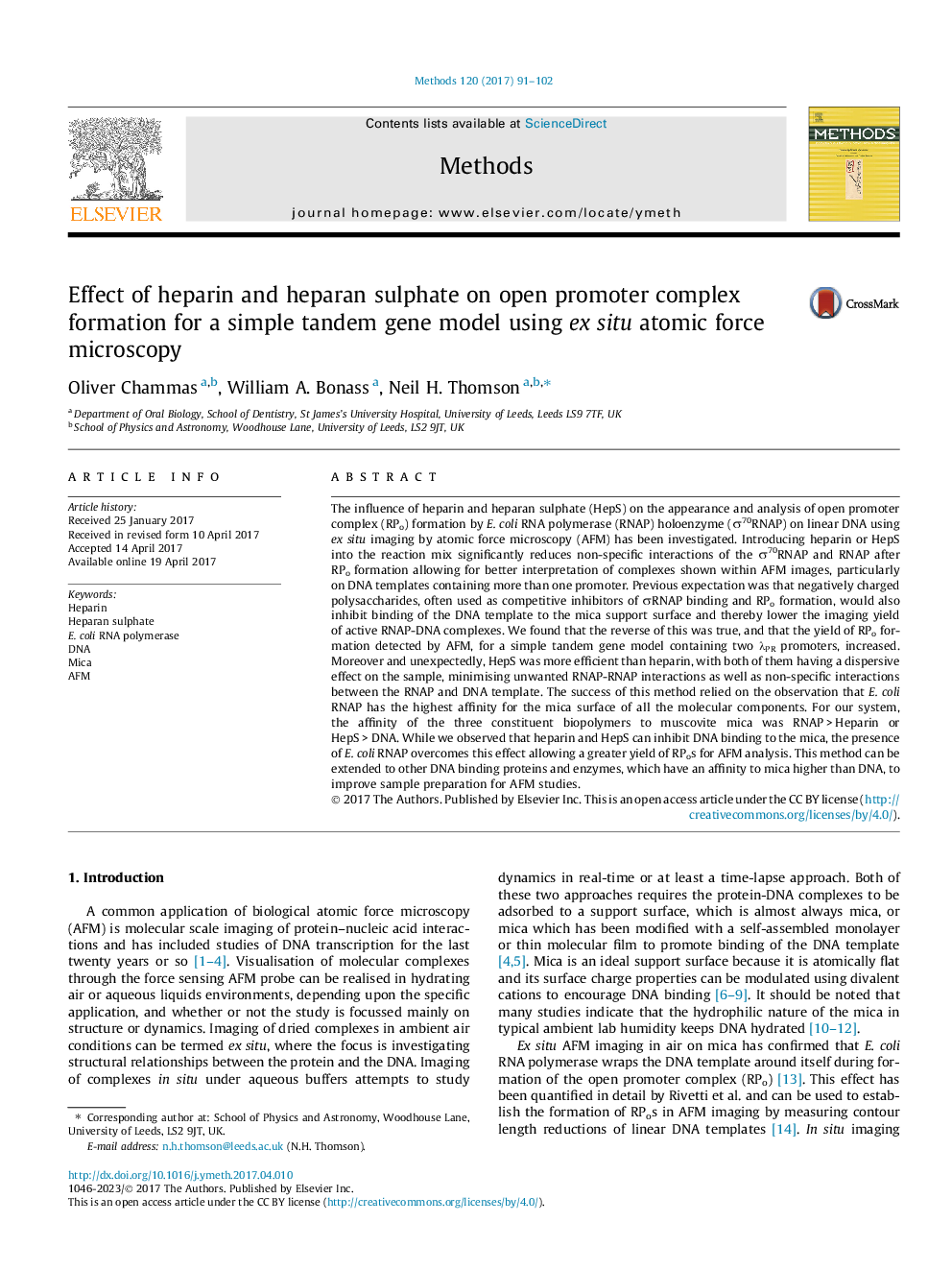| کد مقاله | کد نشریه | سال انتشار | مقاله انگلیسی | نسخه تمام متن |
|---|---|---|---|---|
| 5513642 | 1541207 | 2017 | 12 صفحه PDF | دانلود رایگان |
- Open promoter complexes (RPos) of E. coli RNA polymerase formed on tandem DNA templates.
- Polysaccharide binding inhibitors increase the yield of RPo formation for ex situ AFM.
- Heparin or heparan sulphate (HepS) define single cycle transcription system for AFM analysis.
- Heparan sulphate (HepS) is more effective than heparin, particularly for double RPo formation.
- Binding affinities of molecular components to mica are in order: RNAP > HepS or heparin > DNA.
The influence of heparin and heparan sulphate (HepS) on the appearance and analysis of open promoter complex (RPo) formation by E. coli RNA polymerase (RNAP) holoenzyme (Ï70RNAP) on linear DNA using ex situ imaging by atomic force microscopy (AFM) has been investigated. Introducing heparin or HepS into the reaction mix significantly reduces non-specific interactions of the Ï70RNAP and RNAP after RPo formation allowing for better interpretation of complexes shown within AFM images, particularly on DNA templates containing more than one promoter. Previous expectation was that negatively charged polysaccharides, often used as competitive inhibitors of ÏRNAP binding and RPo formation, would also inhibit binding of the DNA template to the mica support surface and thereby lower the imaging yield of active RNAP-DNA complexes. We found that the reverse of this was true, and that the yield of RPo formation detected by AFM, for a simple tandem gene model containing two λPR promoters, increased. Moreover and unexpectedly, HepS was more efficient than heparin, with both of them having a dispersive effect on the sample, minimising unwanted RNAP-RNAP interactions as well as non-specific interactions between the RNAP and DNA template. The success of this method relied on the observation that E. coli RNAP has the highest affinity for the mica surface of all the molecular components. For our system, the affinity of the three constituent biopolymers to muscovite mica was RNAP > Heparin or HepS > DNA. While we observed that heparin and HepS can inhibit DNA binding to the mica, the presence of E. coli RNAP overcomes this effect allowing a greater yield of RPos for AFM analysis. This method can be extended to other DNA binding proteins and enzymes, which have an affinity to mica higher than DNA, to improve sample preparation for AFM studies.
84
Journal: Methods - Volume 120, 1 May 2017, Pages 91-102
